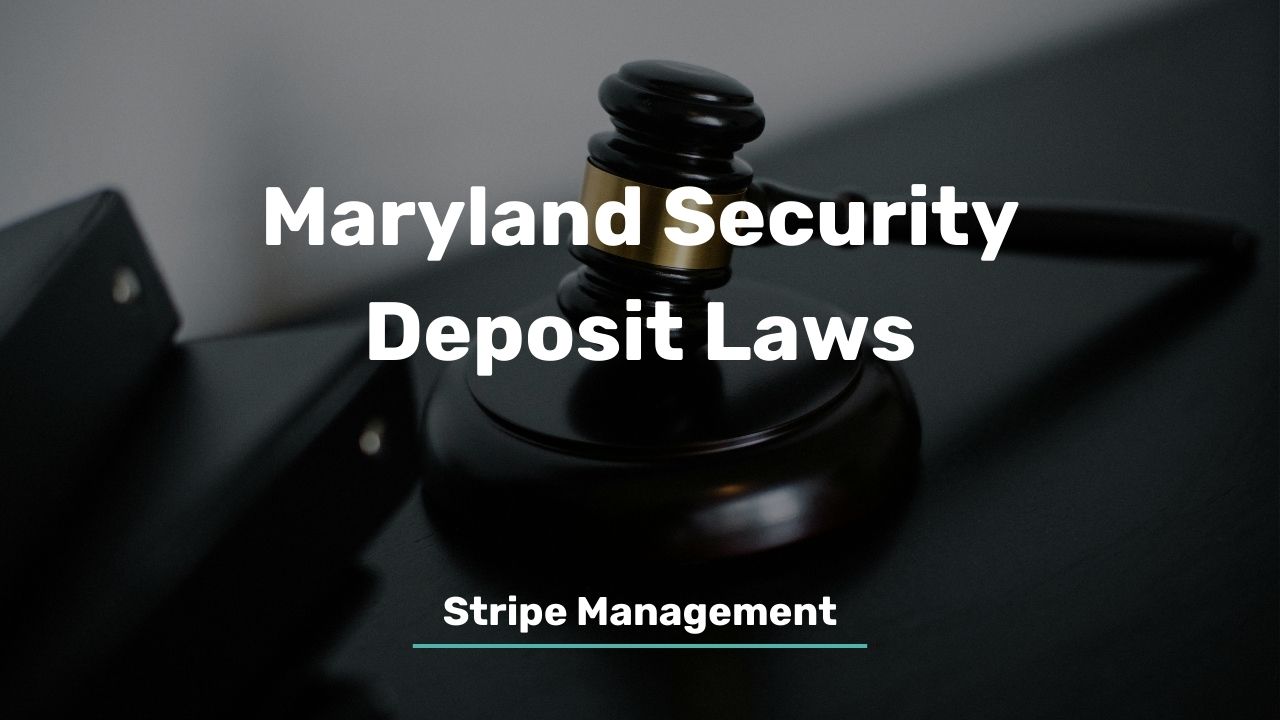
Under Maryland landlord-tenant law, landlords have a right to collect a security deposit from their tenants. In exercising this right, however, you must ensure you keep certain things in mind.
Here are the key highlights of the Maryland security deposit law to ensure you stay legally compliant as a landlord.
Security Deposit Limit
In Maryland, there is a limitation on how much security deposit you can charge a tenant. The maximum amount must not exceed two months’ rent. For example, if you are charging tenants a monthly rent of $2,000, then $4,000 would be the maximum amount you can charge them as a security deposit.
If you overcharge tenants, certain legal and/or financial penalties may abound. You may be held responsible for paying the tenant up to 3X the excess amount, plus reasonable court and attorney fees.
Interest on Security Deposits
Once you get hold of the tenant’s deposit, you must store it in a separate account. If the deposit exceeds $50, you are obliged to keep it in an interest-bearing account. The account must earn an annual interest of at least 3% and must accrue biannually.
You also have the option of storing the tenant’s deposit in an insured certificate of deposit in a reputable financial institution.
Another option is the tenant purchasing a surety bond for use as a security deposit. Be that as it may, as a landlord, you have a right to either accept or reject this form of security deposit.

Written Receipts
Once you receive the tenant’s deposit, you must write to them notifying them of having received their deposit. You can also include the receipt as part of the rental agreement. The receipt must contain the following information:
- The tenant’s right to have a move-in inspection: If the tenant wishes to have the inspection, they must notify the landlord of this intention within 15 days of moving in. The delivery of the notice must be via certified mail.
- The tenant’s right to be present at the end of the tenancy: The tenant must make their intentions known to the landlord. This notification must be in writing and must be sent at least 15 days before their lease expires. The tenant must also provide three crucial details, that is, their intention to move out, when they plan to do so, and their new address.
As a landlord, you must keep the receipt for a minimum of two years after the tenant moves out, regardless of whether they moved out due to an eviction, property abandonment, or expiry of the lease. If you do not provide the tenant with this receipt, you’ll be liable to pay them $25.

Security Deposit Deductions
You have a right to make deductions on a tenant’s security deposit for certain legitimate reasons. The following are the allowable reasons:
- To cover any due rent: Before a tenant moves out, they must ensure they have cleared any rent balances due under the lease. If the tenant moves out without doing so, you can make appropriate security deposit deductions.
- To fix damage exceeding normal wear and tear: You can hold a tenant liable for any damage that arises from their abuse, misuse, negligence, or carelessness. Examples of such damage include holes in the wall, missing fixtures, broken tiles or windows, and a torn or burned carpet.
- Other lease violations: An example of this would be illegal property alterations. If the tenant doesn’t make the fix before moving out, you can make appropriate security deposit deductions for the cost of restoration.
You must not hold a tenant liable for any pre-existing damage and any damage that results from normal wear and tear. It’s your responsibility as a landlord to fix these types of damages.
Examples of damages that usually arise from normal wear and tear include the following:
- Gently worn carpet
- Stained bathroom fixtures
- Loose door handles
- Lightly scratched glass
- Lightly dirtied grout
- Loose doorknobs
- Faded paint
Walk-Through Inspections
As a landlord in Maryland, you have a responsibility to carry out a walk-through inspection. The following is what you must do in this regard:
- You must conduct the inspection within 5 days either before or after the tenant leaves.
- You must notify the tenant in writing of their right to be present for the inspection.

The purpose of this inspection is to check for any damage the tenant may be liable for.
Returning a Tenant’s Security Deposit
Once a tenant has moved out, you must return their deposit, or whatever portion remains, within 45 days. You must also remember to include any accrued interest. You must then send these to the tenant’s last known address via first-class mail.
If making any deductions, you must provide the tenant with an itemized list of deductions as well. With that in mind, please be wary not to illegally withhold a tenant’s deposit. Otherwise, you could be liable to paying the tenant up to 3X the wrongfully withheld amount, plus court and attorney fees.
Sale of the Rental Property
In the event the ownership of the property changes hands, you must do the following:
- Transfer the deposit, minus allowable deductions, to the new landlord.
- Provide the new landlord with the security deposit receipt.
If you fail to do this, you’d still be on the hook for returning the deposit to the tenant.
Conclusion
This guide has offered important basics that every landlord in Maryland must have at their fingertips regarding tenants’ security deposits. If you have a question or need expert help in the management of your Maryland rental property, don’t hesitate to get in touch with Stripe Management!
As a full-service property management company, we can help you handle all aspects of property management. From tenant screening, rental maintenance, rent collection, to legal compliance, and everything in between. Get in touch to learn more!
Disclaimer: Please note that the information provided in this blog is intended for general guidance and should not be considered as a replacement for professional legal advice. It is important to be aware that laws pertaining to property management may change, rendering this information outdated by the time you read it.
